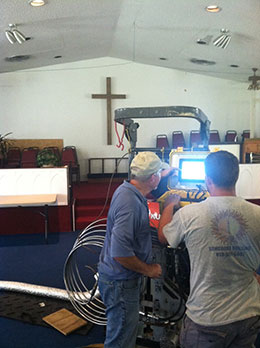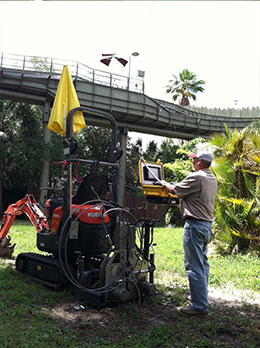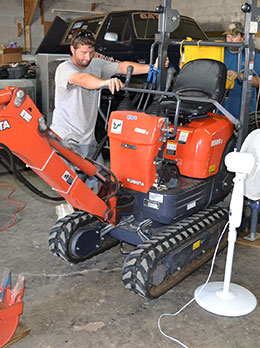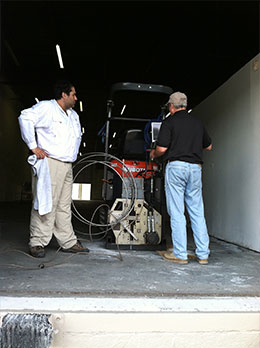Mini Cone Penetrometer (MCPT)
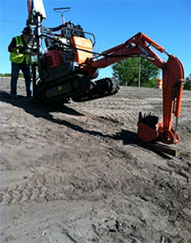 BJ Rock (BJR) would like to introduce an innovative and economical alternative to the Standard Penetration Test (SPT) for performing shallow to medium depth subsurface investigations. This equipment, known as the Mini Cone Penetrometer (MCPT), is capable of providing near-continuous soil type and strength characteristics up to depths of 50 feet in sandy and clayey soils.
BJ Rock (BJR) would like to introduce an innovative and economical alternative to the Standard Penetration Test (SPT) for performing shallow to medium depth subsurface investigations. This equipment, known as the Mini Cone Penetrometer (MCPT), is capable of providing near-continuous soil type and strength characteristics up to depths of 50 feet in sandy and clayey soils.
The mini cone diameter is approximately 0.6 inches and is connected to a coiled steel rod that is straightened as it is pushed into the soil by a specially designed hydraulic thrusting unit. Electronic load cells continuously measure the soil resistance on the cone tip, along with a section of the cone above the tip (cone sleeve), and a computer converts these measurements to soil types and common soil properties.
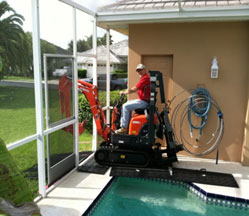 Mounted on a mini excavator with an overall width of 28 inches and a height less than 6 feet, the MCPT is ideal for working in tight/difficult access areas as well as providing a small footprint of disturbance on the typical residential and commercial site. It is also an ideal tool to provide detailed supplemental soils information above very hard soil and/or limestone strata that require penetration with a typical drill rig.
Mounted on a mini excavator with an overall width of 28 inches and a height less than 6 feet, the MCPT is ideal for working in tight/difficult access areas as well as providing a small footprint of disturbance on the typical residential and commercial site. It is also an ideal tool to provide detailed supplemental soils information above very hard soil and/or limestone strata that require penetration with a typical drill rig.
Electronic cone technology, while not widely used in Florida, is very common in some areas; “Today, the CPT is one of the most used and accepted methods for soil investigation worldwide” (Wikipedia), and MCPT data is very reliable; “Our 2 sq cm mini cone penetrometer system provides the same valuable stratigraphic detail and soil strength information as our large diameter cone penetrometers.” (Gregg Drilling – Texas)
BJR has a relationship with the University of South Florida that provides us with any required calibration and technical support for the MCPT equipment. To introduce USF engineering students to the MCPT technology, BJR conducts soil investigation and evaluation demonstrations for the Soil Engineering Laboratory classes each semester at the Tampa campus.
On site, real time reporting includes graphs of tip resistance, sleeve resistance, friction ratio (between tip and sleeve), correlated SPT N value, and correlated soil type versus depth. In addition, BJR provides easy to read and interpret soil logs correlated from the MCPT data. Examples of these are shown below.
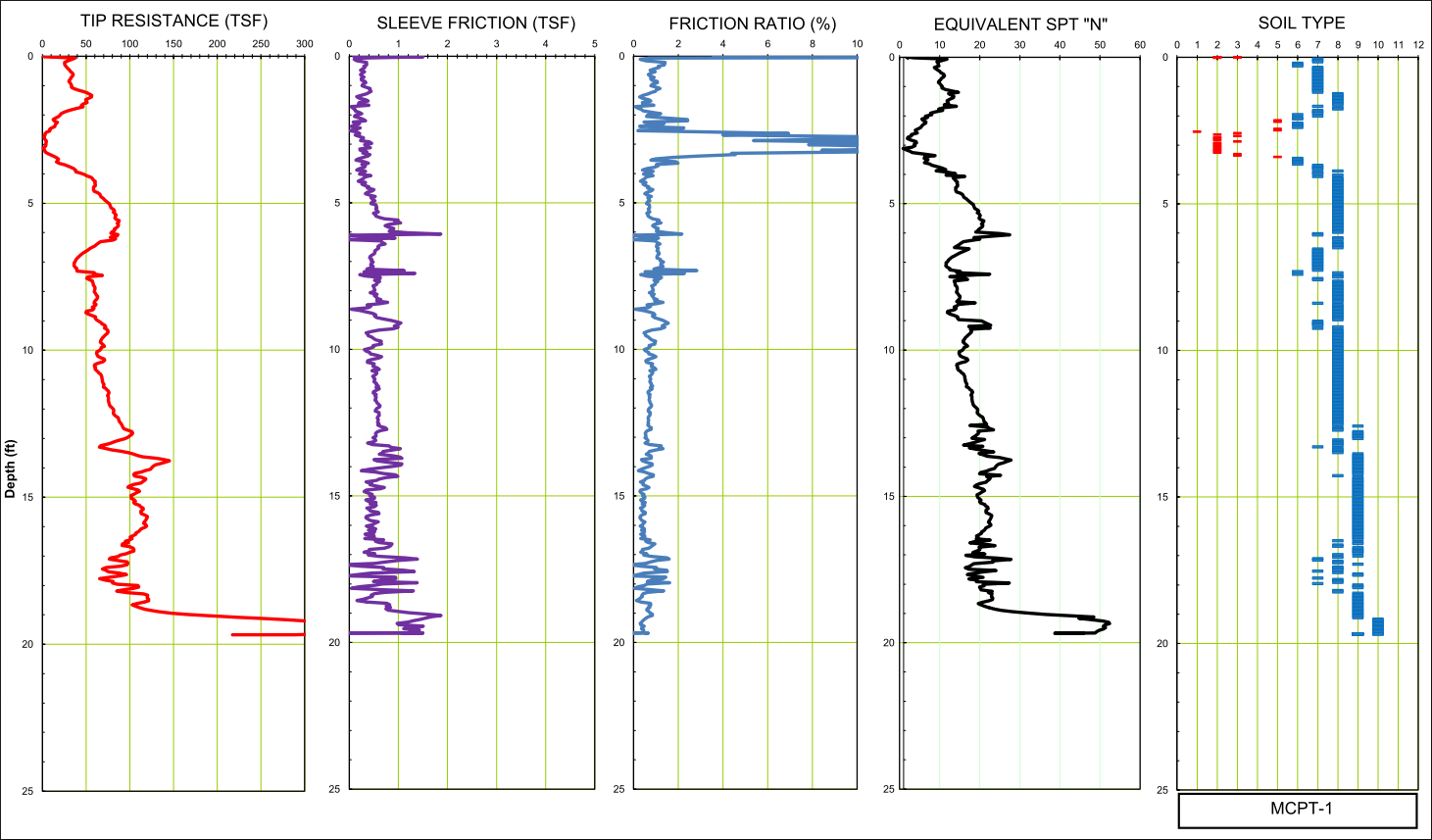
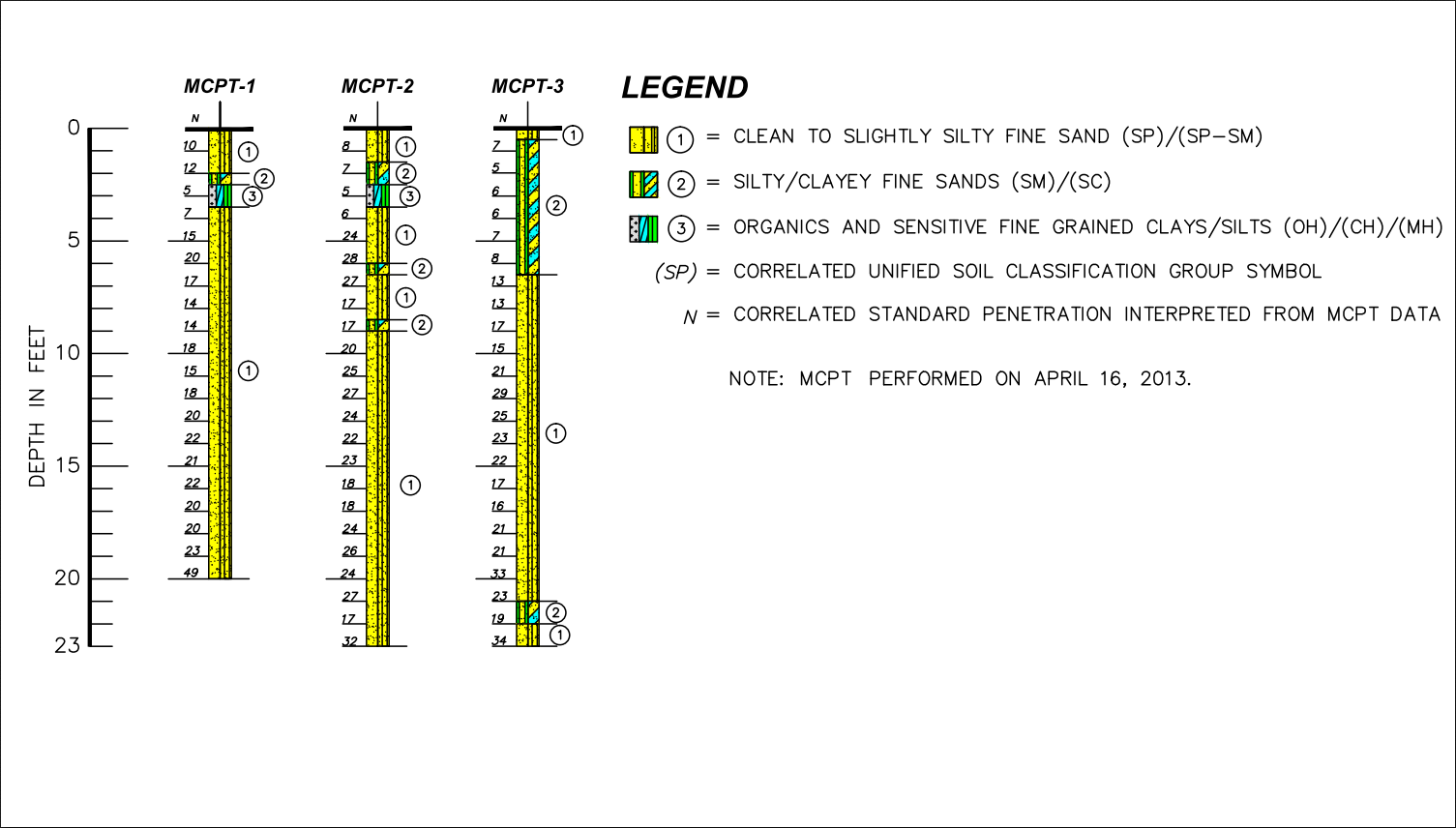
Detect thin layers easily missed by SPT • Superior accuracy and precision compared to SPT • Equipment is clean and quiet with no spoils or drilling fluid mess • Up to 5 times faster than traditional drilling • Almost no risk of causing depressions or drop outs in known Sinkhole conditions • Very cost effective
